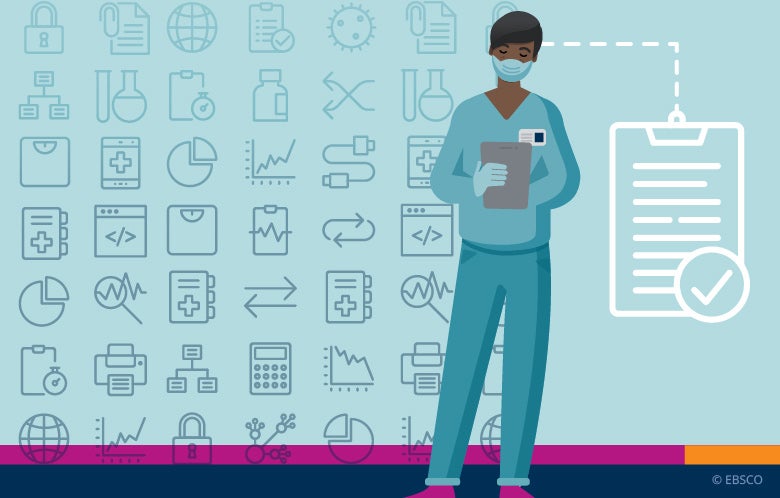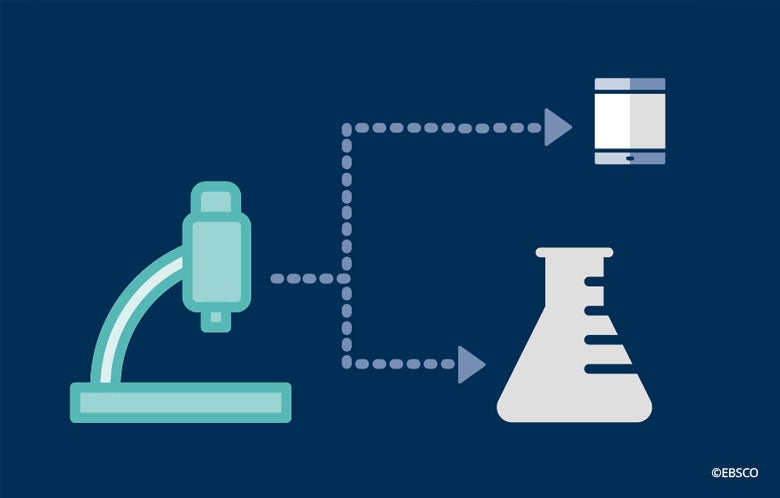Streamlining access to medical content has always been a challenge. Clinicians, nurses and researchers in the medical field want information delivered to them at the right place and the right time. But with so much medical content released every day (and at a rate that feels impossible to keep up with), many in the medical field are left to sift through vast amounts of information to find the content they need to meet their specific research or specialty needs.
That’s why implementing a plan around how medical content is accessed and delivered to staff is more important than ever.
Consider a User-Friendly Research Portal
Layers of pages and links make it difficult for users to navigate to the resources and services they need. For medical staff to be successful in their jobs they need to easily connect to and find information. That’s where an intuitive research portal comes into play. Simply put, a research portal is a user-friendly doorway to your medical content. This is the first step to consider when it comes to streamlining access to medical content.
But not all research portals are created equal. If your portal is designed well, follows user experience (UX) best practices and is maintained by a central team (e.g. the medical library), it will provide an easy research experience for users.
When considering a research portal, look for one that is easy to use from an administrator perspective and a user perspective.
Benefits for Admin
- Fully responsive content management system (CMS) created specifically for research.
- Provides seamless, turnkey integrations (discovery, internal repositories, SharePoint, authentication).
- Create multiple sites or domains for individual departments or locations — publish information to all or selective sites.
Benefits for User
- Allows users to access content from any device — tablet, desktop or mobile. Helping to acquire information on the go.
- One-stop-shop for content access, no need to re-enter credentials again and again. Can be accessed through multiple key touchpoints.
- Interact with a research portal designed specifically for their specialty, streamlining information access.
Becoming Agile with Critical Information
COVID-19 demonstrates the need for not just medical institutions but all institutions worldwide to become an agile enterprise. Constructing a subject-specific research portal and tapping the right integrations creates the ability to offer different types of content in real time to the right audience. If done through a user-friendly research portal, this alleviates information overload, delivers accurate and current information and allows users to find what they need efficiently.
A Multi-Domain Approach
Chances are your medical institution has multiple departments with their own unique research and medical content needs. Implementing a research portal that can be extended and customized to meet those needs creates a better user experience. Having the ability to create multiple domains from a single administrator dashboard means centralizing your team’s workflow and saving time and effort.
The key to improving access to medical content starts with effective platforms, key integrations, customized experiences and tactics to deliver medical content directly to users.
The key to improving access to medical content starts with effective platforms, key integrations, customized experiences and tactics to deliver medical content directly to users.
Delivering Content to Users
Utilizing a variety of features to deliver the latest journal or evidence-based content to users saves time and ensures they are educated with current information. Here are some “delivery” examples:
RSS Feeds – Really Simple Syndication (RSS) Feeds contain basic, regularly updated content on a particular topic. Administrators should have the ability to configure RSS feeds onto their portal.
Alerts – Notifications of changing information within your medical institution or in important fields of study can be displayed easily via alert pop-ups on your research portal. This feature allows administrators to create an alert to be displayed on a specific page and users must close the pop up in order to carry on with their task, ensuring that each user reads the alert. Alerts can be used to announce new content, trainings, educational opportunities, unexpected closures, special events, and more.
They key to improving access to medical content starts with effective platforms, key integrations, customized experiences and tactics to deliver medical content directly to users. Tapping a professional services team can set you on the right track for creating the most optimal research experience for users in every department.

